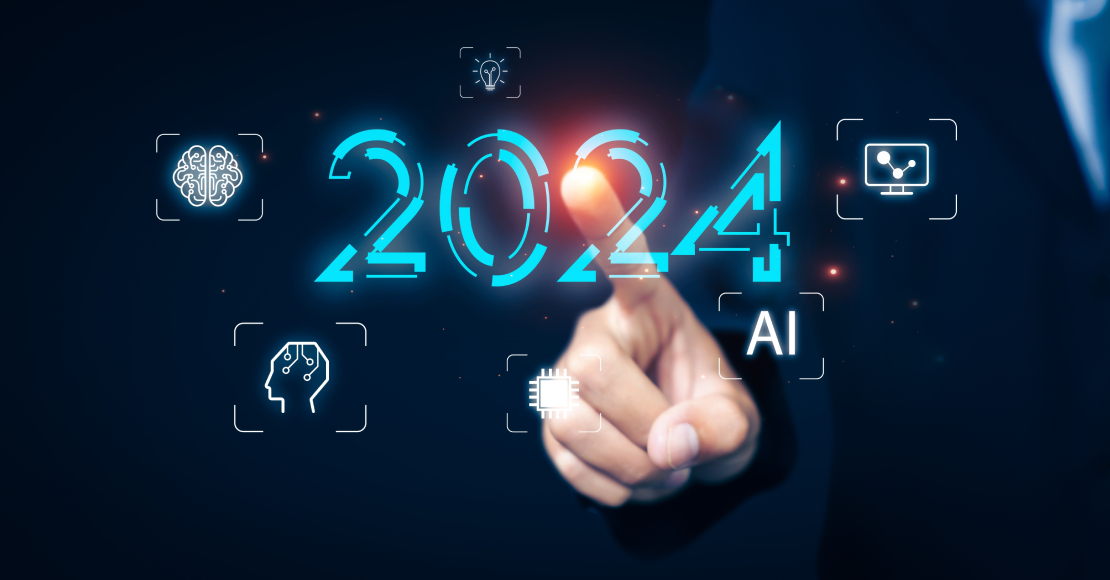
Marching Towards Better Security: The IAM Trends to Watch in 2024
With technology always evolving, and new threats emerging almost every day, it’s important to stay on top of the latest cyber security trends. The world of Identity and Access Management (IAM) is constantly adapting, and in this blog post we’re delving into some of the key IAM trends set to shape the sector this year, and explore how businesses can use these IAM trends to bolster their own cyber defences.
AI’s Growing Influence
The rise (and the increasing sophistication) of AI in recent years is already transforming cyber security strategies, and reshaping how many people think of IAM. Thanks to AI’s rapid evolution, businesses face escalating threats, from sophisticated phishing schemes to AI-generated content. Last year, many malicious actors used tools like ChatGPT to write BEC and phishing emails. In January, the NCSC warned ransomware attacks will increase because of AI.
However, it’s not all bad news. Integrating AI into your security strategies is a key IAM trend, helping businesses boost their cyber defences and stay ahead of evolving cyber threats. In fact, AI promises to become one of the major IAM trends over the coming years. By automating tasks like user provisioning and analysing users’ behaviour, AI enhances efficiency and precision while bolstering security, and AI’s predictive capabilities can also enable proactive defence measures, by helping cyber security teams to anticipate and deal with potential threats before they can do any damage.
More Advanced Biometrics
Biometric authentication is set to become more widespread, offering businesses a robust defence against the likes of data breaches and unauthorised access. As traditional password-based methods falter against phishing attacks, biometrics have emerged as a secure alternative. Leveraging unique physical traits like fingerprints, facial recognition, and even iris recognition, biometric authentication can strengthen security while also making the user experience more efficient and more seamless. A growing number of businesses are turning to biometrics – recent research by FICO revealed 87% of businesses said biometrics were a favourite authentication choice.
With advances in technology such as AI and machine learning, biometric systems have become even more accurate and reliable, helping to stave off insider threats and cyber attacks. In 2024, biometrics could also include users’ behavioural analytics rather than just their physical attributes. By analysing their signature, how they type on a keyboard, or even how they walk, authentication processes could become even more stringent, and protect businesses’ assets. There are some downsides to the use of biometrics, however. With biometrics improving and securing authentication measures, criminals may start targeting the hardware and software they use instead. They may also try to steal the biometric data itself, raising concerns about the privacy and security of this data. It’s crucial businesses meet these challenges and stay ahead of potential threats.
Stricter Data Privacy Regulations
When it comes to IAM and cyber security, regulatory compliance is crucial. That’s why here at Infosec K2K, as part of our security assurance services, we offer our clients IAM Audit & Compliance Services. Different industries and sectors have different regulations related to data security, from GDPR to HIPAA, and failing to comply with these can lead to costly fines and even damage your firm’s reputation.
IAM solutions can help your business to meet these regulations, as audit trails and user activity monitoring can help with regulatory audits. The number of regulations faced by today’s businesses are on the rise, and this trend is likely to increase even more in 2024. For example, the EU’s NIS2 directive came into effect last year, and businesses must comply with it by October this year. Companies are facing mounting compliance challenges, and staying updated is essential. Businesses that prioritise regulatory compliance save money, but also build trust with customers and stakeholders – and Infosec K2K’s thorough compliance audits can ensure long-term success.
Zero Trust Architecture
Recently, zero trust has gained traction and is on the rise, with more and more organisations opting for this IAM trend. Last year, the global zero trust security market was estimated to be worth $21,673.9 million, and is set to grow at a rate of 19.5% from 2024 to 2030. Even governments are turning to it – President Biden signed an Executive Order mandating US federal agencies adopt zero trust architecture.
When it comes to zero trust, businesses must assume that there are malicious actors trying to access their network at all times – and that all devices, users, and applications are a potential threat. In order to get into your network, users must have to keep proving their identity. Zero trust architecture focuses on authenticating and authorising every user and device accessing the network, regardless of their location or network environment. At Infosec K2K, we recognise the importance of zero trust principles in reducing the risk of data breaches and insider threats. Our IAM solutions incorporate zero trust principles to ensure only authenticated and authorised users are able to access your most critical resources.
By embracing the latest IAM trends and strategies, businesses can adapt to the evolving threat landscape and stay one step ahead of malicious actors. At Infosec K2K, we’re committed to empowering organisations with cutting-edge IAM solutions, and helping them to navigate the complexities of modern cyber security with confidence.
Whatever solution you’re looking for, we can help. The experts at Infosec K2K can offer you specialist guidance, and help you find the product that’s the best fit for you.
Get in touch with us to find out more about how we can help you.